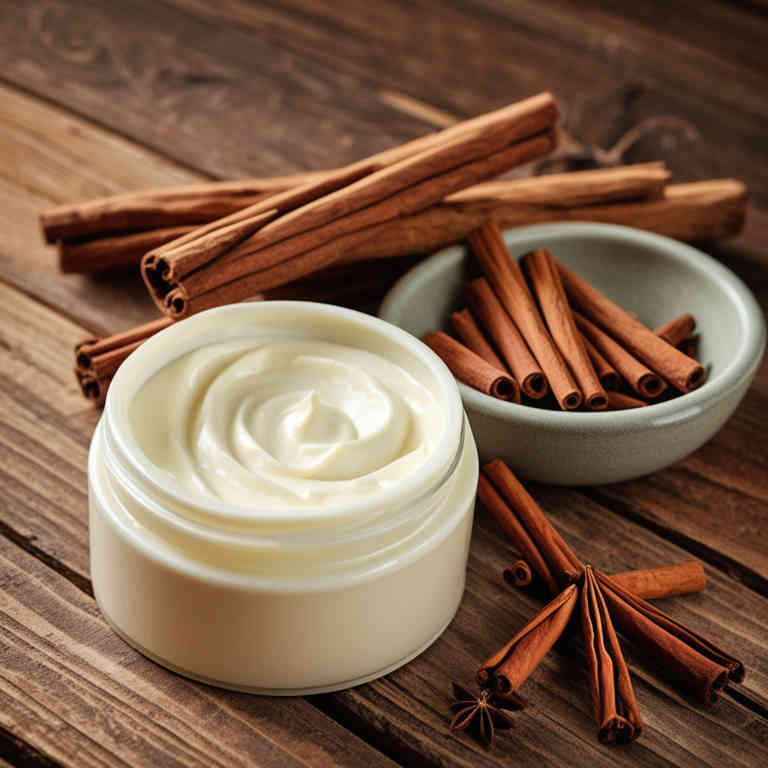Cinnamomum verum cream for medicinal use

Cinnamomum verum cream is a topical preparation made from the essential oil of the cinnamon bark, derived from the plant Cinnamomum verum, commonly known as true cinnamon.
This cream is used in herbalism to provide warming and soothing effects on the skin, often applied for its anti-inflammatory and antimicrobial properties. It is traditionally used to alleviate muscle pain, joint discomfort, and skin irritations. The aromatic compounds in the cream also help to stimulate circulation and promote a sense of relaxation.
In herbal medicine, it is valued for its ability to support healing and comfort in various topical applications.
Uses
Cinnamomum verum cream has been used to treat various ailments for centuries, particularly in traditional medicine systems like Ayurveda and Chinese medicine.
Historically, it was valued for its warming properties and was used to alleviate digestive issues, cold symptoms, and skin conditions. In traditional practices, the cream was also applied topically to reduce inflammation and promote circulation. Modern applications have expanded to include its use in skincare products for its antioxidant and anti-inflammatory benefits.
Today, it is often incorporated into natural remedies and cosmetic formulations for its aromatic and therapeutic properties.
Benefits
Cinnamomum verum cream has health benefits such as improving circulation, reducing inflammation, and supporting heart health.
It contains essential oils and compounds like cinnamaldehyde, which have antimicrobial and antioxidant properties. This cream may help alleviate symptoms of arthritis and other inflammatory conditions due to its pain-relieving effects. It can also aid in skin healing and may help manage blood sugar levels in individuals with diabetes.
Regular use of Cinnamomum verum cream may contribute to overall wellness and immune support.
Constituents
Cinnamomum verum cream active constituents include cinnamaldehyde, cineole, and eugenol, which are responsible for its therapeutic properties.
These compounds possess anti-inflammatory, antioxidant, and antimicrobial effects, making the cream beneficial for skin conditions and wound healing. Cinnamaldehyde is known for its ability to reduce inflammation and improve circulation. Eugenol provides a soothing effect and can help alleviate pain and irritation.
Overall, the cream is valued for its natural healing properties and is often used in traditional medicine for various health applications.
Preparation
To make Cinnamomum verum cream, begin by grinding 1 tablespoon of cinnamon bark into a fine powder.
In a saucepan, melt 1 cup of coconut oil over low heat, then add the cinnamon powder and stir continuously for 5 minutes. Next, add 1/2 cup of honey and 1/2 cup of almond milk, mixing until the mixture is smooth and well combined. Allow the cream to cool slightly before transferring it to a jar and refrigerating for at least 2 hours.
This preparation can be used as a topical moisturizer or added to smoothies for a warm, spicy flavor.
Side Effects
Cinnamomum verum cream may lead to gastrointestinal discomfort, including nausea, vomiting, and diarrhea, due to its strong aromatic compounds.
It can also cause allergic reactions in individuals sensitive to cinnamon, manifesting as skin rashes, itching, or more severe symptoms like anaphylaxis. Prolonged use may result in liver toxicity, as some studies suggest that high doses of cinnamon can affect liver function. Additionally, it may interact with certain medications, such as blood thinners, increasing the risk of bleeding.
It is important to consult a healthcare professional before using this preparation, especially for prolonged periods or in high concentrations.